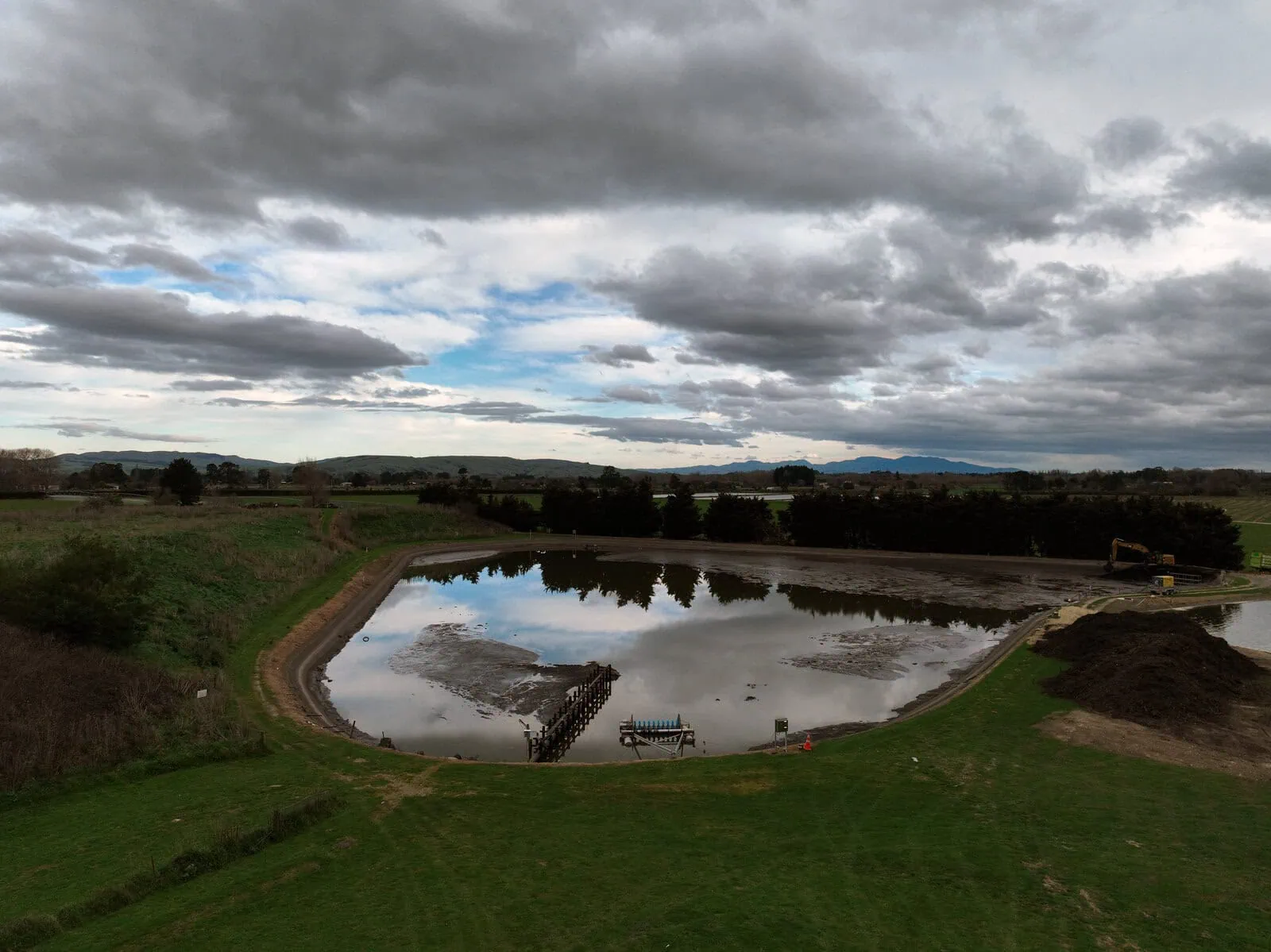Overview
What is sludge?
Sludge is the semi-solid material created during wastewater treatment.
Traditionally, it is processed using complex methods to remove the water before disposal to landfill.
Our approach will naturally compost the sludge on a lime pad, converting it into a beneficial product for for end use on land without the need for a resource consent.
How does this composting process work?
Windrow composting: The treated sludge is laid out in windrows on lime pads. As with normal composting, the sludge will be turned and moisture levels maintained to facilitate ideal conditions for thermophilic bacteria. The bacteria generate heat which kills harmful pathogens and stabilises the material. The bacteria also break down the organic matter, transforming it into a soil-like material.
Safe reuse: Once fully composted, the material is suitable for use in land rehabilitation and other non-food applications. It meets environmental safety standards and supports sustainable land management.
Testing: The compost will be rigorously tested to ensure quality meets A1 biosolids guidelines.
What are the benefits?
Environmentally, this process:
- Reduces landfill waste.
- Minimises greenhouse gas emissions by diverting organic materials from landfill.
- Avoids the need for resource consent due to quality of the A1 compost.
- Utilises the beneficial nutrients within the sludge for land improvement.
What are we going to do with it?
There are strict regulations around how the final product can be used, even with a high quality A1 biosolid rating. There are a few options we are currently working toward – more info to come!
We’re hopeful that this could be an additional revenue stream for Council in the near future.
Are other places doing this?
Our initiative builds on these proven methods while tailoring the process to local needs and environmental conditions.
Other Councils in NZ have already been in touch to find out more.
Timeline
Pond 3 is desludged
Sludge is turned regularly
Sludge is turned weekly and tested regularly for temperature to kill pathogens.
Compost is created
After four months the process is complete and the compost is tested against strict criteria before being stored for use in restorative land projects.








